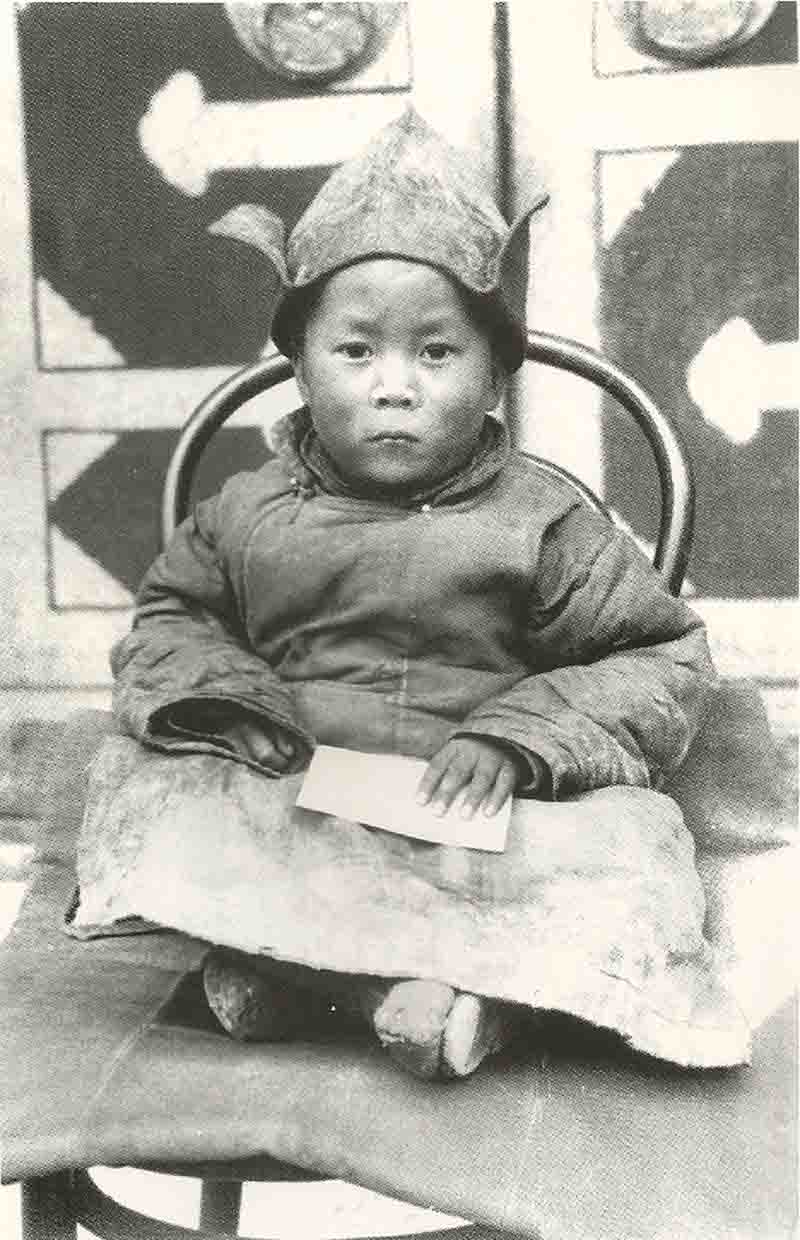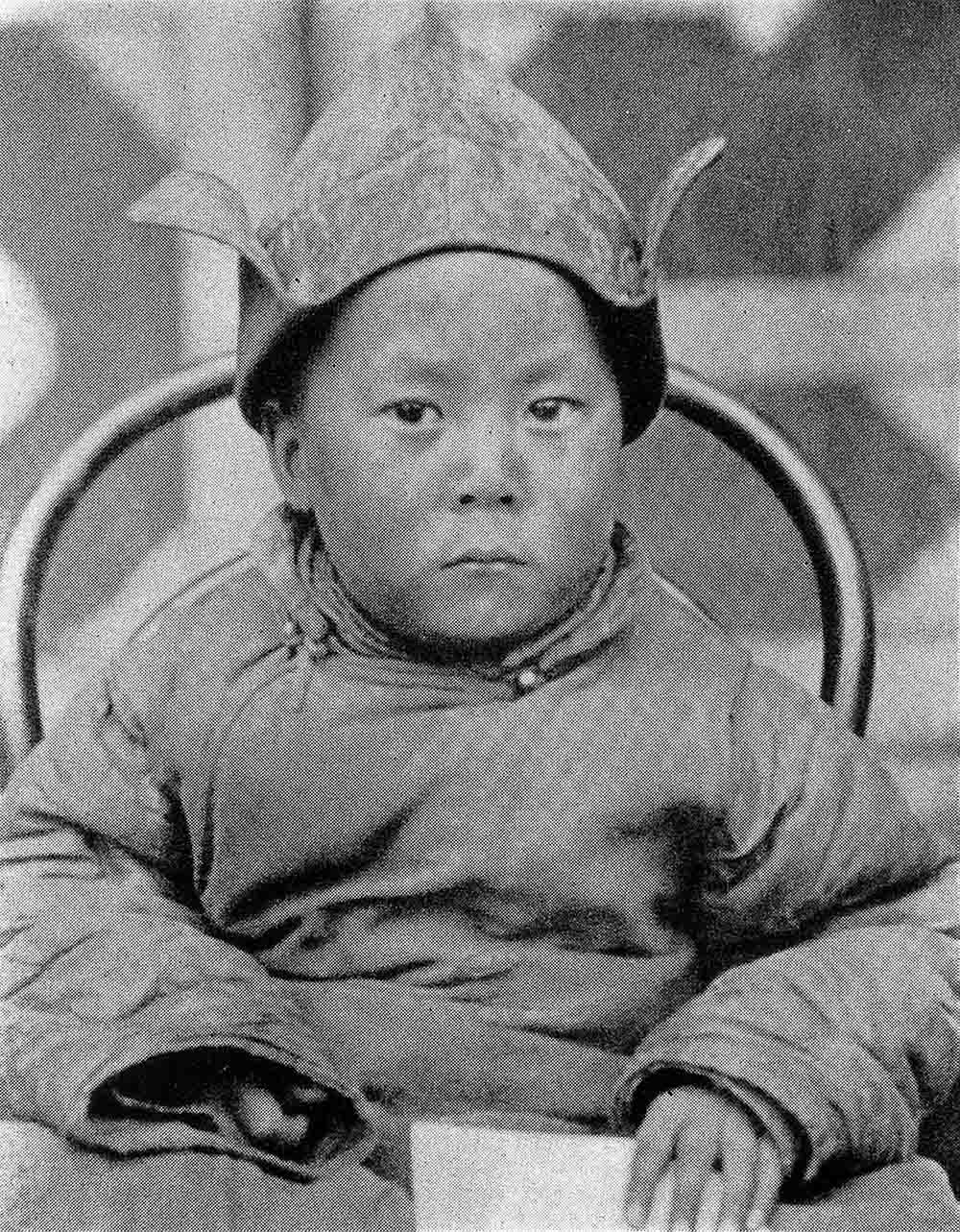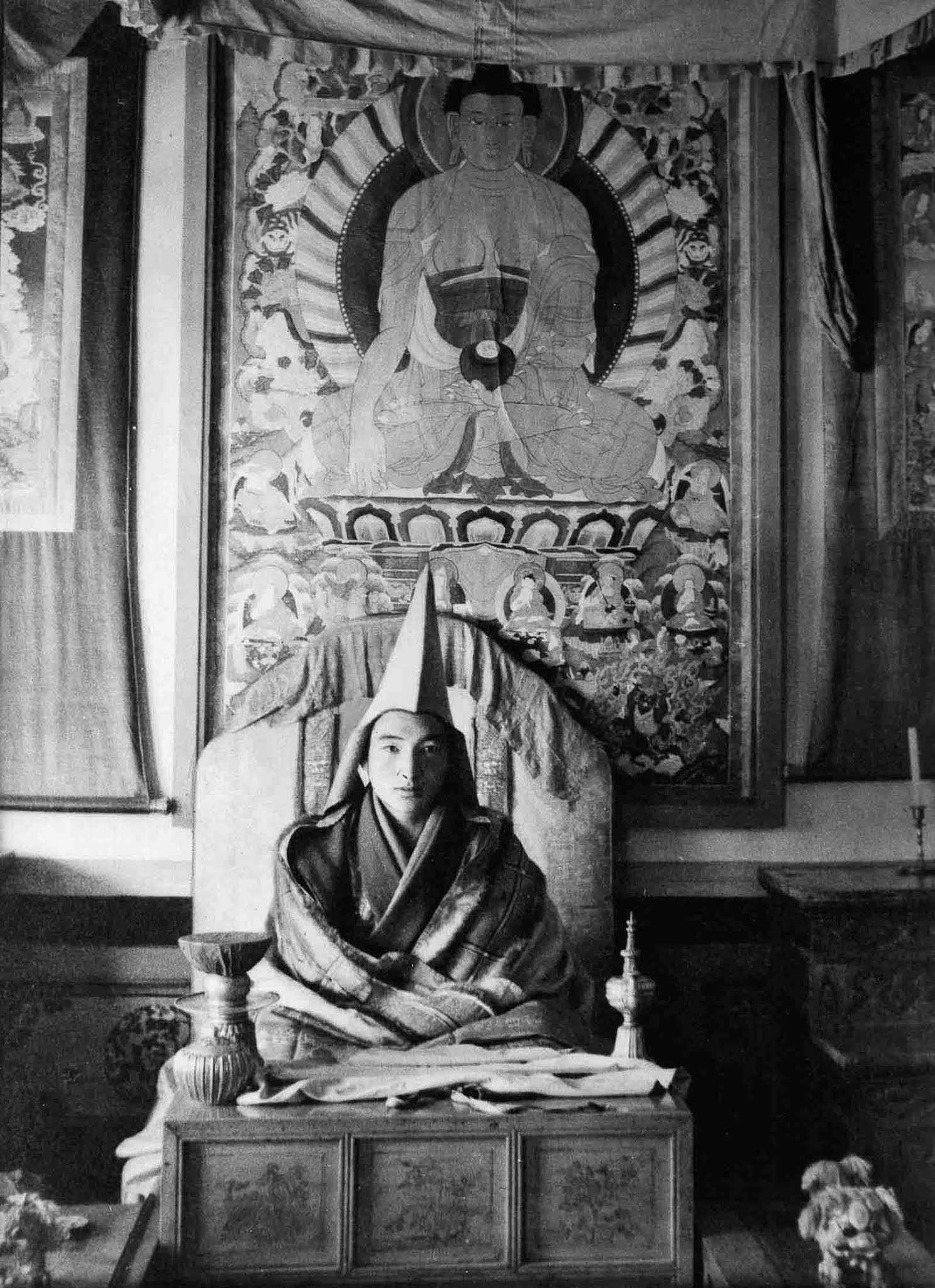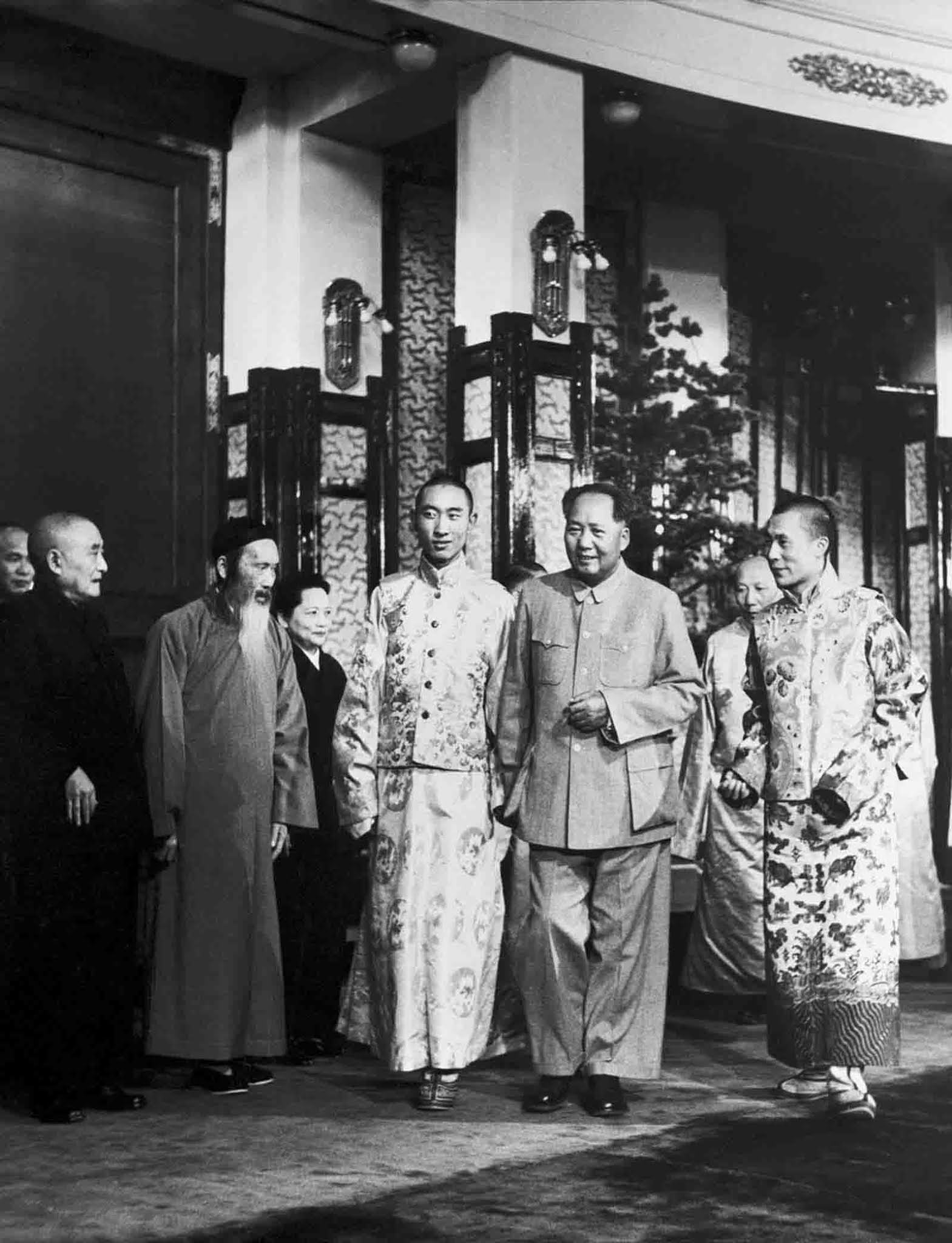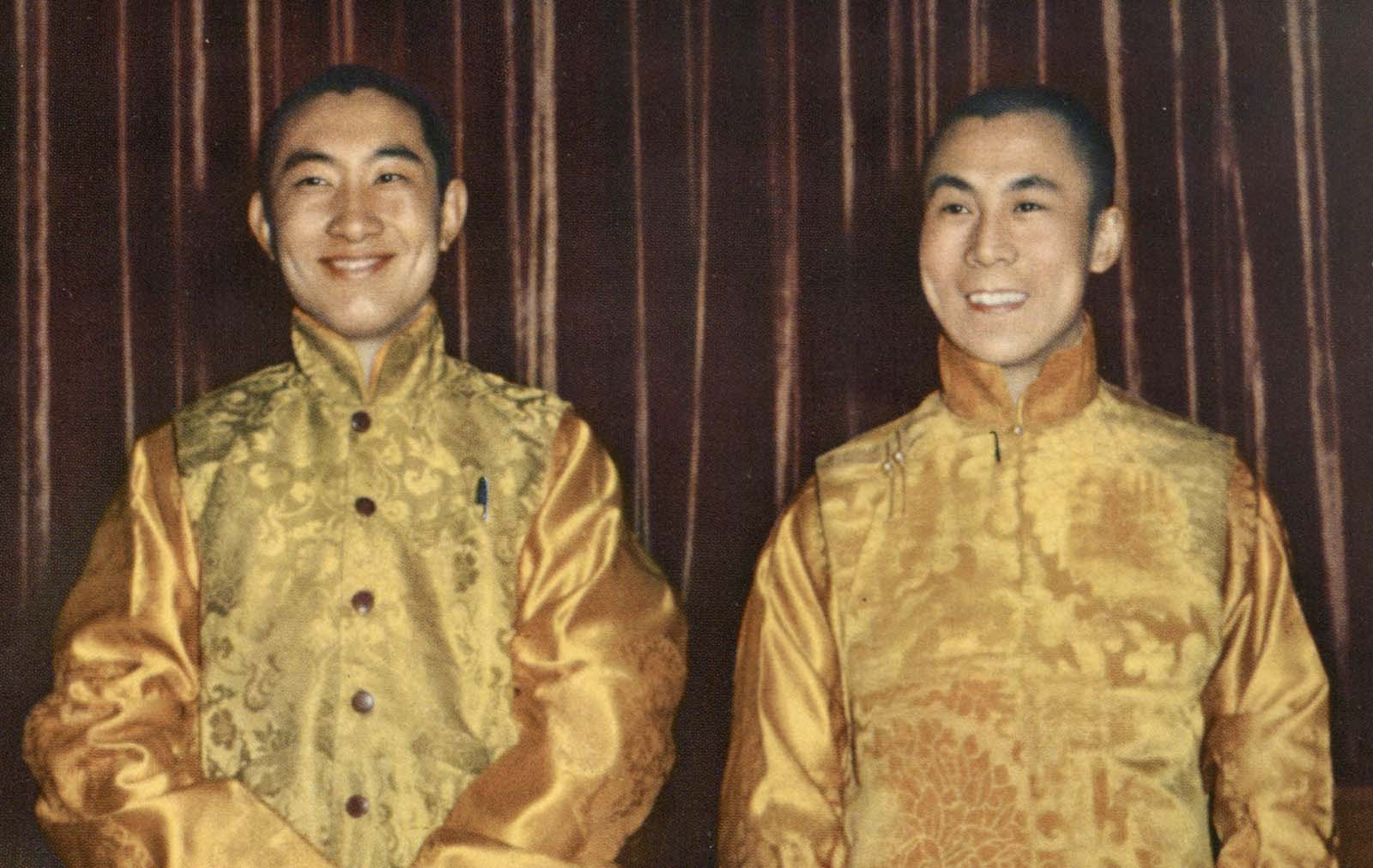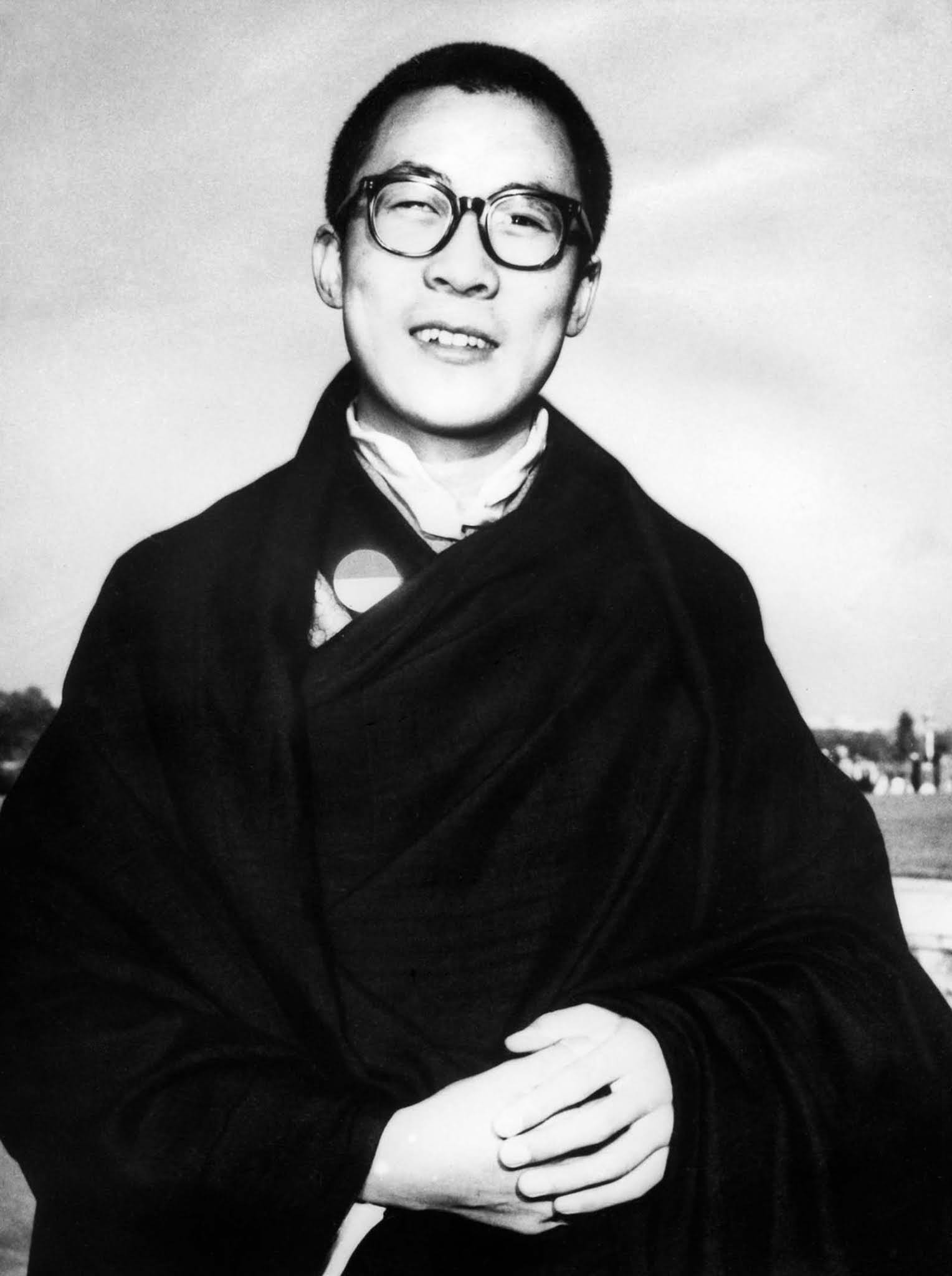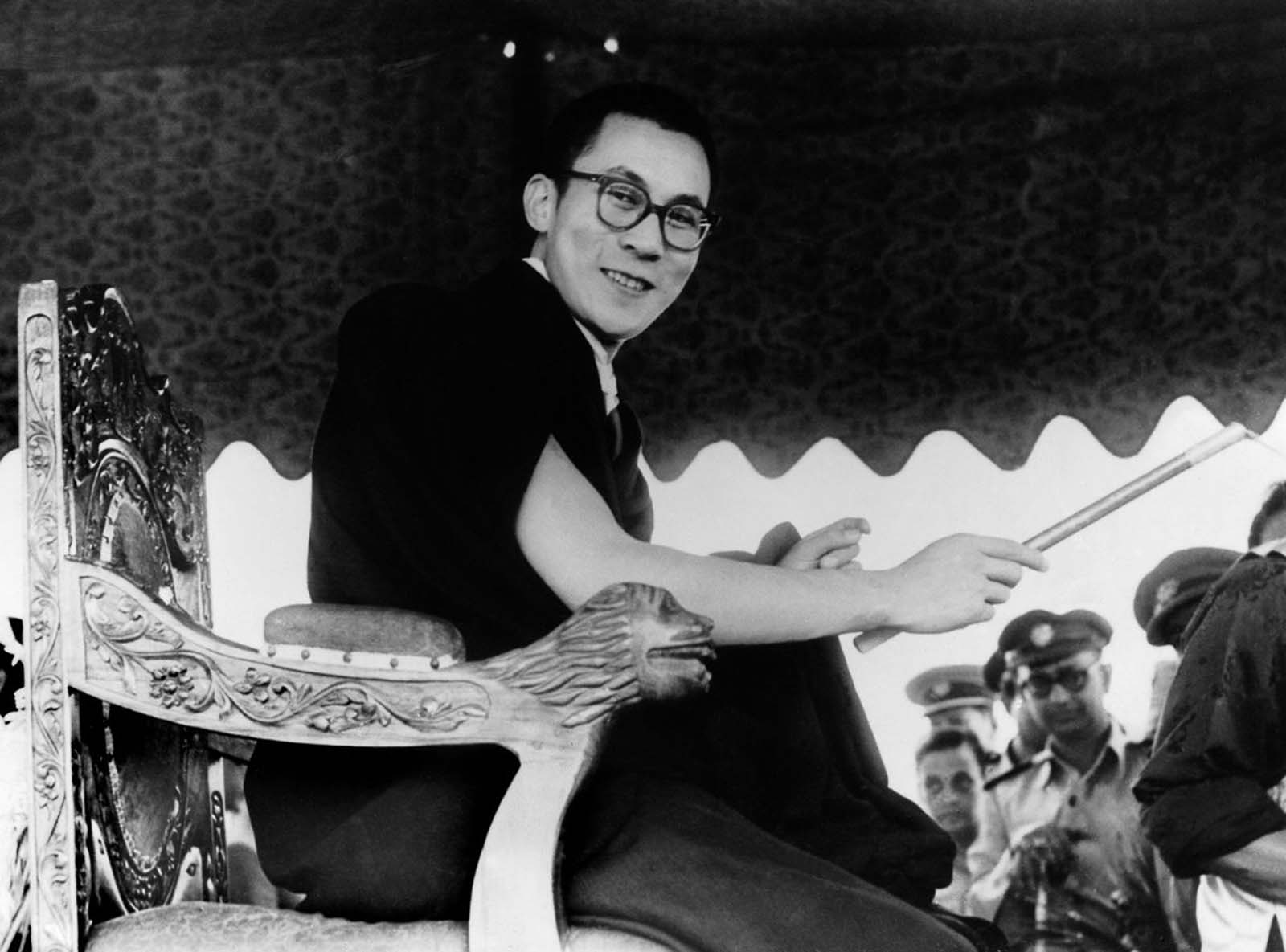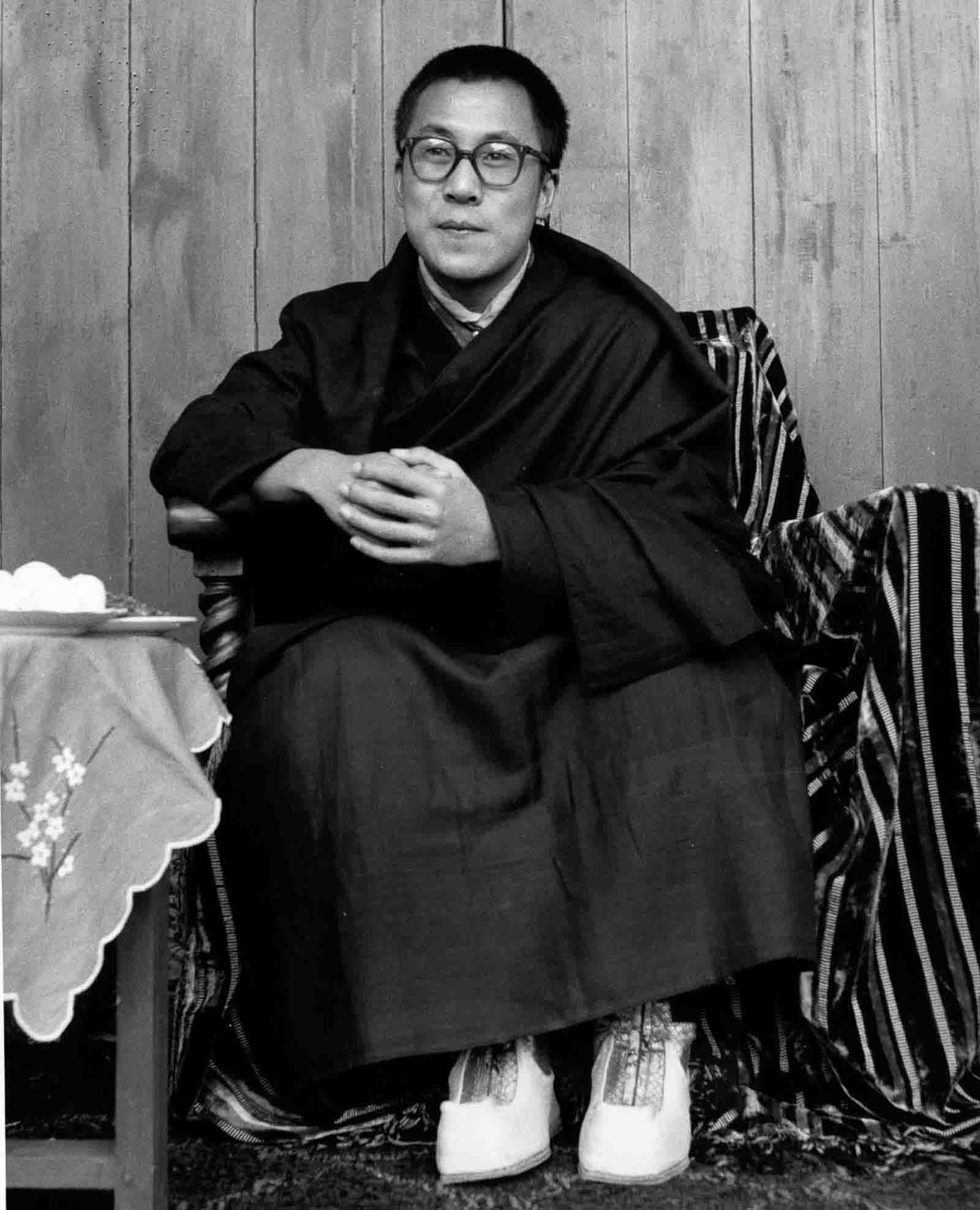This belief is deeply rooted in the Tibetan Buddhist faith that an individual’s spirit remains, even after the physical body dies. The 13th Dalai Lama of Tibet died in 1933. At that time, the Tibetan people began the search to identify his reincarnation, their future leader. In 1937, Lhamo Thondup, later named Tenzin Gyatso, was identified as the 14the Dalai Lama of Tibet. Lhamo Thondup (translated to “Wish-Fulfilling Goddess”) was born on July 6, 1935, to a poor family in the town of Taktser, situated in the Amdo region of northeastern Tibet. Just two years later, in 1937, the high lama Kyestang Rinpoche (a Tibetan Buddhist spiritual master) has a vision at Lhamo Lhatso, an oracle lake in southern Tibet, which directed a group of Tibetan monks to the home of Lhamo Thondup. According to the search lore, when the monks visited in disguise, posing as pilgrims, its leader, a Sera Lama, pretended to be the servant and sat separately in the kitchen. He held an old mala that had belonged to the 13th Dalai Lama, and the boy Lhamo Dhondup, aged two, approached and asked for it. The monk said, “if you know who I am, you can have it.” The child said “Sera Lama, Sera Lama” and spoke with him in a Lhasa accent, in a dialect the boy’s mother could not understand. Later, when the young boy was presented with various objects, he selected those that belonged to the 13th Dalai Lama, stating, “It’s mine”. In every case, he chose the Dalai Lama’s own objects and rejected the others. The series of difficult tests that followed confirmed that Lhamo Thondup was the reincarnation of the 13th Dalai Lama. The young boy was taken on a 3-month journey to Lhasa, the capital of Tibet. In 1940 the 14th Dalai Lama was installed on the Lion Throne at the Potala Palace, a 1,000 chamber winter home of the Dalai Lama, located on the mountainside overlooking the city of Lhasa. The traditional ceremony enthroning the 14th Dalai Lama was attended by observing foreign dignitaries after a traditional Tibetan recognition process. A regent governed the country while the 5-year-old Dalai Lama completed his rigorous religious education. In 1950, 84,000 troops of the newly created People’s Republic of China launched a major invasion of Tibet. The small Tibetan army was unable to handle such an invasion. As a result, the Dalai Lama was forced to finish his studies and assume full political rule of Tibet. The teenaged ruler struggled with his responsibilities, but he firmly grounded all his decisions and actions in Buddhist philosophy. Finally, on March 31, 1959, the Dalai Lama recognized that he was no longer safe and that he could better serve the Tibetan people from outside Tibet. He fled the country and more than 80,000 Tibetans followed him into exile to India. More than 1.2 million Tibetans (one-fifth of the population) have died as a result of China/s occupation of Tibet. Tens of thousands have been arrested and tortured for their political views. Over 6,000 monasteries have been destroyed, ancient texts burned, and Buddhist followers prevented from becoming monks and nuns. Despite this abuse against his people, country, and religion, the Dalai Lama refuses to feel hatred toward China and its leaders. Continuing to adhere to a code of Buddist morals, he recognizes that all people have endured suffering at some point in time. He maintains the Chinese, including their leaders, should be treated with compassion. The Dalai Lama appealed to the United Nations on the rights of Tibetans. This appeal resulted in three resolutions adopted by the General Assembly in 1959, 1961, and 1965, all before the People’s Republic was allowed representation at the United Nations. In 1970, he opened the Library of Tibetan Works and Archives in Dharamshala (India) which houses over 80,000 manuscripts and important knowledge resources related to Tibetan history, politics, and culture. It is considered one of the most important institutions for Tibetology in the world. (Photo credit: Wikimedia Commons / Walter Bosshard / Kanwal Krishna / Encyclopedia of Religious and Spiritual Development) Notify me of new posts by email.
Δ Subscribe
